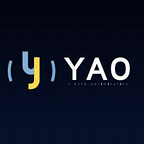How YAO Network Defies Cookie-Cutter Blockchain-Based Business Models
Blockchain. Business. The alliteration only serves to emphasize the cohesion an integration of the two will bring. It is old news by now that blockchain has slowly infiltrated the market and made its presence known in various industries (its voice being the loudest in remittance services). With blockchain technology in the mainstream, however, comes a myriad of business models that have popped up over the decade. But before we outline the types of models that exist today, let’s recap how a traditional business model works.
The above picture is an extremely simplified model of how traditional businesses work. Basically, owners or shareholders of an organization will provide a service or a product to their consumers, be it directly or indirectly through employees. Wages and prices are adjusted according to expenses and may vary among businesses depending on the percentage of profits earned, though the underlying principle remains the same.
So How is It Different in the Blockchain Service Model?
Blockchain technology is famous for its decentralized nature, and that means there are no centralized authority present that owns the blockchain. Owners and shareholders are removed from the picture, and upon delving a little deeper, one can argue that the users of the blockchain can be considered as owners themselves.
This innovative change in roles is what makes blockchain so lucrative and appealing to others. Rather than a top-down approach that are used in traditional businesses, blockchain enables every party to make a profit. It does not matter if one is an investor, an organization or business owner.
For instance, one of the common ways blockchain-based business models rack in profits is through the release of its tokens. These tokens can be loosely interpreted as a company’s shares and are distributed during an Initial Coin Offering (ICO).
Early investors can choose to hop onto the project, buying the tokens before the project is set for market release. This gives the project the initial capital to get started. When the project advances and gains traction, early investors benefit from the increase in value of the token, making it a win-win situation for all.
So What Types of Blockchain-Based Business Models Are There?
As can be seen from the image above, blockchain-based business models can be broadly categorised into 7 models: token economy, blockchain-as-a-service (BaaS), development platforms, blockchain-based software products, network fee charge, blockchain professional services and p2p blockchain business model.
All 7 blockchain-based business models leverages on different aspects of blockchain technology to provide a holistic service for their targeted industries. But what if we could integrate it all? Isn’t labelling a thing of the past century?
Introducing YAO Network — A Platform That Defies All Labels
YAO Network may appear to be a BaaS platform, but it undercuts its label in an unexpected fashion — Its booming ecosystem is driven by a revolutionary integration between two business models: token economy and BaaS. So, how does this work?
Its Secret Weapon — YAO Token
As the native token on YAO Network platform, YAO can be transferred and traded in the YAO Network ecosystem. It is based on ERC-20 and will be separated from the chain. The YAO system is designed to be highly efficient, effective and secure, and loosely coupled, contributing to the healthy development of YAO Network’s ecosystem.
YAO performs a variety of functions in YAO Network ecosystem, including:
a.Paying for community resources in multiple activities, including creating blockchain network, leasing resources, and using blockchain technical module and development tools
b.Paying for services and contents in the ecosystem, including blockchain products and services, customized enterprise-level solutions, etc.
c.Consumption, trading and deals with external ecosystem, including the marketing of technology belonging to enterprises and developers, and the marketing on platforms, etc.
d.Rewarding users for their positive contributions to the ecosystem, such as providing premium service and content, marketing the platform, etc.
That’s not all. The YAO Token is also used as an incentive to encourage users to contribute to the ecosystem, and generate more positive activities within the community. These incentives are distributed according to the extent users have contributed to the ecosystem.
First, the ecosystem will collect, integrate and analyze multiple parameters to determine the level of contribution to the community. If eligible, the system will dispense the tokens as incentives to each user accordingly. Subjects likely to receive these incentives are thus: developers and providers of services, contents and resources; consumers of services, contents and resources; promoters of services; active participants of community activities; etc.
Sounds Complicated? Let’s Illustrate It With an Example…
In a blockchain service mall, the platform collects multiple data from a certain service provider, including the number of users, sales, reviews, etc. These parameters are calculated through the incentive model and calculation results are returned to service providers as feedback, encouraging them to continue providing premium services to the ecosystem.
YAO Network Incentive Ecosystem
Furthermore, YAO Network has an Incentive Task Board that connects the community and enterprises to blockchain developers. Community members and enterprises can release development tasks and their token prices on the Board. YAO Network can then evaluate a developer’s performance through the Developer’s Toolkit and give out corresponding tokens as incentives when warranted.
To sum it all up, the incorporation of tokenomics into a traditionally BaaS model is truly ingenious in fostering the healthy development of a blockchain ecosystem.
After all, a successful business does not rely on the ways of the old but forges its own path, defying cookie-cutter models to form an extraordinary one of its own.
Interested to find out more? Stay tuned to YAO Network through its social media:
Facebook: https://www.facebook.com/networkyao/
Medium: https://medium.com/@yaonet
Telegram: https://t.me/yaonetworkcommunity
Twitter: https://twitter.com/yao_network
Website: https://yao.dev/
